Show Transcript
Welcome to episode 3 of Casual Citizen, an on-going series about the upcoming 1st person MMO, Star Citizen by Cloud Imperium Games. I’m your host Alysianah from the Mystic Worlds Gaming Blog.
BEGIN TRANSMISSION
This week’s episode will take us into the realm of actual game content, as we discuss what’s available for play-testing Alpha 2.0. Sit back, relax and enjoy.
What version of the game are you play testing?
One of the first things to understand about play-testing Star Citizen is that there are two different environments. We have the Private Test Universe, commonly called PTU. This is where new content and changes are released to a subset of the backers for testing. Testing on the PTU allows development to ensure they don’t introduce game-breaking defects to the other environment for play-test called the Live server.
As a backer, you are not guaranteed access to the PTU. The subset of players invited to PTU changes based on how wide an audience they feel they need to participate. The duration of the PTU also varies, depending on the number of issues found and how long it takes to fix them. When and if you’re invited to play-test on PTU, you’ll receive an email from CIG explaining how to participate.
The Live Server is the version of Star Citizen that is available to all backers who own a game package. Live content has already gone through play-test on the PTU, and was deemed appropriate for wider consumption. In general, when people are discussing game mechanics and what there is to do in Star Citizen, they’re discussing the Live version. If not, they’ll preface that it’s PTU. Likewise, if you encounter an issue or have a question, make sure you’re clear in distinguishing PTU from Live.
One of the ways in which development teams keep track of the content included in a particular release, is by using version numbers. Star Citizen is no different. The content on the PTU has a version number as does the Live Server. In general, the PTU is further ahead than Live because it’s where content is released first. For example, the PTU is currently at 2.1.d while the Live Server is sitting at 2.0. This means that not only did a 2.1 version of the game get published to PTU but it’s been updated four times – a, b, c, d. Additionally, no version of the changes sitting on PTU were deemed stable enough to be published to the Live Server and we know this because it’s sitting at 2.0.
All that said, it’s important to know the distinction between PTU and Live when you’re asking for help. People generally need to know the version number too. This is especially true when discussing issues on the forums, Reddit or reporting bugs on the Issues Council. Now that we have the preliminaries out of the way let’s discuss the content that’s currently available on the Live Server.
The Hangar Module
The hangar module was the first part of the game released to players for play-testing. Historically speaking, it’s also the first place a ship shows up in the game. Ships are made Hangar Ready before they become flight ready, something we discussed in the episode 2.
When you purchase ships beyond the one from your initial game package, you must add them to the hanger yourself. This is done using the My RSI option on RobertsSpaceIndustries.com. After clicking My RSI, click the My Hangar link. From there you’ll see the different hangars you have access to and all of the items you’ve purchased, that can be displayed in a hangar, such as your ships.
Click the Configure button to change to a different themed hangar or drag and drop available ships on the left, to where you want them in your hanger on the right. Depending on the ship size, multiple ships may be able to fit in the same bay. The number of bays in your hanger will shrink and grow to fit the number of ships you have placed into your hangar configuration. When you’re done changing things around, click save. These changes will be reflected in the actual game the next time you enter your hangar.
In addition to previewing ships before they’re Flight Ready, the hangar allows you to customize Flight Ready ships. Each hangar contains a Holo table. This is a 3D interface that can be used to customize your ship by changing weapon load-outs, shields, etc. and applying different paint jobs where applicable. Be aware that configurations made using the Holo table do not persist past your current gaming session. The next time you log into the game, you’ll have to set your ship’s load-out again. This is not the long term intention. The ability to permanently save changes you’ve made will be implemented sometime after persistence is added to Star Citizen.
In the not too distant future – I hope, the features needed to invite other players into your hangar will be incorporated. This will be a great way to group up with friends in multi-crew ships and discuss the layout and various roles you’ll each play before doing so in combat. It can also serve as and way to socialize in a private space and allow friends to see ships that are only hangar ready that they might not own. I’m really crossing my fingers that this feature is available alongside the much larger ships being made hangar-ready. Players are speculating that the Starfarer will be the next large ship made hangar ready. I’d be very happy if inviting people into your hangar is unveiled at the same time.
Sim Pod
The Sim Pod is used to access simulation modules such as Arena Commander and Star Marine when it’s available for play-testing. From a lore perspective, these are games within the Star Citizen universe that citizens play. For us, they’re modules designed to test very specific game mechanics. Arena commander supports testing flight and ship combat mechanics. Star Marine will be for play-testing FPS. The Sim Pod is one of the ways you can access these modules. Another way is through the game menu recently added. The new menu simplifies moving between play-test modules. To access the Game Menu press the Escape key and choose main menu.
Character Load-out
You can change the armor your character is wearing by accessing the character load-out platform in your hanger or by pressing F6. Doing either will let you choose from pre-configured outfits such as light armor or heavy armor. In the future, we’ll be able to mix and match armor sets as well as other items of clothing that will be purchasable in game. The first such in game store will the Casaba located in ArcCorp Area 18. More on Area 18 in a bit.
Customizing Your Hangar
Similar to player housing in other MMOs, the hangar can store decorative items you purchase from the RSI website, earn through the referral program or are awarded as a subscriber. Aquariums, liquor cabinets, cots, workbenches, posters, trophies, etc. are some of the things currently available. For now, the game places these items in a static location inside your hangar. Once the game adds grabby hands, the mechanic that will allow players to grab and place items, we’ll be able to move items to where we want them inside the hangar.
In summary, the hangar is used to view ships and configure their load-outs. Change your character’s armor set and view items you purchased or were rewarded as decorations in your hangar. You can interact with the Sim Pod to enter Arena Commander. In the near future, we’ll be able to invite friends into our hangar and arrange its contents ourselves.
Arena Commander
Arena Commander, called AC, is a module that will remain as module, even after other aspects of the game are molded into a seamless experience. From an in-game fiction perspective, AC is what pilots use to simulate and test flight mechanics, space combat and racing. It provides players with an opportunity to experiment and compete, without fear of losing their ship or having their character permanently injured.
The AC menu can be accessed via the game menu by pressing Escape | Electronics Access | Arena Commander or by interacting with the Sim Pod inside your hangar. Once accessed, the main AC menu has three options. Option 1 is Spectrum Match, which allows you to compete with and against other players in public or private matches. There are different modes, each with different objectives and maps options. Option 2 is Drone Sim, which allows you to access the subset of the Spectrum Match modes that make sense for solo play. Option 3 is Basic Flight Training, the in-game tutorial.
I won’t discuss details of the various AC modes but here are some general thoughts. People play AC Public Matches to compete on the Leaderboards and to earn REC points. REC is used to rent ships and weapons. A try before buy sort of thing. To rent items using REC visit RobertsSpaceIndustries.com | Store | Electronic Access.
Drone Sim is very good for learning how flight and combat mechanics work. There are many videos on YouTube on all aspects of Star Citizen, and this area is no exception. You can practice what you’re seeing in the video in a safe environment by using Drone Sim Free Flight Mode. Perfecting takeoff and landing is something good to try in Free Flight Mode. Press CTRL + F to leave the pilot’s seat which would allow you to then exit your ship.
If you want a “safe” place to practice combat fighting NPCs, Drone Sim Vanduul Swarm mode is the ticket. Vanduul Swarm presents waves of NPCs for you to defeat. You can gage your improvement by how long it takes you to complete waves and how many waves you can complete before your three lives are depleted.
I enjoy using the Drone Sim racing maps to practice fine tuning my control of a ship. Each ship feels and flies differently. As a new HOTAS user, I need and want the practice in preparation for navigating Jump Points in the Persistent Universe. Something we’ve been told is dangerous, can lead to damaging your ship on the low end of consequences or death at its worst.
This may seem silly to some but I also use the racing maps to see my ship in daylight. The racing maps are very detailed – like flying through a futuristic city. I imagine this is what it may feel like when I’m departing or arriving with passengers on my Genesis Starliner. Similar to Free Flight, you can exit your ship and goof around in the racing maps.
Lastly, while the Basic Flight Training is a good effort as an alpha tutorial, it does contain bugs and walls of text I find disruptive. I often found it less frustrating using YouTube and Free Flight. That said, the tutorial is an excellent method of learning the game’s lingo and default key mappings.
The Social Module – ArcCorp Area 18
Before I talk about the role of ArcCorp Area 18, I want to provide some context. Like our universe, Star Citizen will be made up of many star systems. Within a star system such as ours which is called Soul, there is of course a star, our sun, and planets that orbit it, like earth. Those planets may have satellite celestial bodies of their own, like our earth has the moon. Stanton is a star system within the fictional universe of Star Citizen. ArcCorp is one of the 4 planets within that system. Area 18 is a landing zone on the planet ArcCorp.
From a play test perspective, Area 18 is for testing social features of the game. It’s our first look at the types of content we will find planetside. There are pure social locations such as bars. Medical facilities where players would be resurrected if they died in the vicinity or wanted to purchase medical supplies. In the near future, we’ll be able to customize your character’s clothing by shopping in various clothing and weapon stores. Some cities will have dealerships with ships on display that you can purchase. There are job boards where we can receive missions, accept fulfillment orders or take requests to ship cargo, etc. Planetside landing zones is where players will connect with each other and the NPCs carrying out the everyday activities that keep the society humming.
For now, there’s not a lot to DO in Area 18 but it’s still a must see! I’ve yet to visit the area and find it empty. It’s definitely a fun place to explore and get a taste of what’s to come. You access Area 18 by entering the elevator in your ship hangar. The location of the elevator varies depending on the hangar but it’s usually not too far from where your character appears when you spawn in. Once inside the elevator use the keypad to select Area 18.
There are some helpful functions to know for the social module
- F10 brings up chat
- F11 opens augmented reality – like name plates in other MMOs but way cooler
- F12 is your contacts list
- There are slash emotes such as salute, hello and dance1 thru dance 6 will let you get your groove on at the G Loc bar.
Dun-dun-dun…The Persistent Universe – Crusader
Earlier I mentioned that ArcCorp is one of 4 planets in the Stanton system. Crusader is another. Similar to how ArcCorp Area 18 is being used to play-test planetside content, Crusader is being used to test persistent universe mechanics.
The persistent universe is where Star Citizen becomes a seamless first person MMO gaming experience. It’s where you can move from a station or planet-side location to deep space. Once in space, you can explore, do missions, work on careers and trade professions, engage in combat, etc., all without a single loading screen.
Star Citizen Alpha 2.0 contains the first tiny slice of the persistent universe – the area around Crusader and some of its celestial objects. The map itself is small compared to the intended size of the system, and the Star Citizen universe in general. However, it’s large compared to the other play test areas available to us. It would take several hours for you to fly from one end of the crusader map boundary to the other.
The Crusader we’re play-testing in over the coming months will deviate from the content it will have in the released version of the game. CIG will be injecting space stations, landing zones and other elements in order to test mechanics and features, as they’re developed. For example, the planetoid and space station shown in the Pupil to Planet demo, is part of the Nyx star system. However, to test the technology, they’ll be dropped temporarily into Crusader and likely removed once navigating Jump Points have been added so that we can’t actually get to Nyx. It’s important to keep in mind that content may come and go in Crusader for testing purposes and that its composition at any given time, may not match what’s described in the Stanton Galactic Guide or shown in the ARK Starmap.
How to Access Crusader
You can access Crusader from Persistent Universe option on the game menu. It’s also accessible on the keypad in the elevator that’s inside your hanger. If you’re not already in your hanger, pressing the escape key to bring up the Game Menu is the easiest method.
What’s Currently Available in Crusader?
There are a handful of activities you can participate in now, in the persistent universe for Crusader. First off, when you spawn into Crusader you’re in the Port Olisar space station. You’ll want to exit your room and make your way downstairs to the Ship Deck. Interact with one of the consoles in the Ship Deck to summon a ship. Remember that the list of ships includes only those that are Flight Ready and loaners for ships you own, that aren’t Flight Ready. Pay attention to the message on the console telling you where your ship will be delivered and make your way there. You’ll need to interact with the closest airlock to get outside. Once to open the airlock and then to close it on the station side, pressurize and open the door on the external side.
Ship security features have not been implemented yet. Once you open your ship, anyone can enter from thereafter. Stowaways and ship theft are a thing right now. Similarly, if you leave your ship on the landing pad for a long period of time – I think after 10 minutes, it will auto unlock for anyone to take.
Features to control PVP have not been completed. The only location that is safe from non-consensual PVP is Port Olisar, which is an armistice zone. Once you leave those friendly waters, you can be attacked anywhere. Situational awareness is key, as is patience. Most of the trolling and griefing has died down now that the newness has worn off but it’s fairly easy to stumble across trolls on in any MMO.
Keep in mind that PVP and piracy are a part of Star Citizen. They are valid play styles. However, the mechanics to control the where and when, as well as impose consequences, haven’t been implemented but they will be. For now, be patient, take things as they come. Nothing that happens in Crusader is permanent. NOTHING. If your ship is stolen or destroyed, make your way back to the Ship deck and summon it again. It’s that simple.
Once you’re in a ship, you’re free to play-test the following elements:
Missions – The basics of the mission delivery system are in place. Visiting the various Comm Arrays will start a mission event, which has a series of objectives to complete. You can track missions using your Mobi Glass which is accessed by pressing F9. Be prepared for combat. NPC pirates will arrive a few seconds after you enter the general vicinity. You’ll also need to exit your ship and EVA into the Comm Array. CTFL +F lets you exit the pilot’s seat.
You can explore the Covalex Shipping Hub, an abandoned space station that’s lost its gravity generator among other things. Collecting data files will tell the story of what happened there and complete a mission. The ending varies depending on which files you collected. Be on your guard. You may get shot in the face if you startle someone or run across a trigger happy player.
Cry Astro is where you can refuel, restock ammo and repair your ship. Right now everything is free, so make use of these services. Eventually, this will cost in-game money. The drones that come out to service your ship are placeholders until NPCs are introduced into the game.
Be sure to visit Tessa at the ICC Scan Probe. She’s cheeky and really shows off the quality of voice over talent we can expect in-game. Her missions aren’t about tipping through the tulips. In most cases, be ready for combat wherever it is she sends you.
Yela is nearby asteroid belt. I believe the asteroids there are placeholder since it should be the Aaron Halo ring which isn’t as close to Crusader. Again – liberties are being taken to support testing. This is probably where we’ll first test the mining mechanics. For now, it’s just a cool place to fly around. You’ll occasionally run into NPC pirates and PVP players. Some of the asteroids are large enough to land your ship on. It’s a cool thing to do so be sure to check it out.
Last but not least is the Koreah space station. This is for all intents and purposes a FPS location. Players can find automatic weapons here. Don’t go there unless you WANT TO PVP. You can’t sightsee there and whine if you get your head blown off. You will likely encounter PVP on the way in, as players try to clear a safe landing for themselves to enter – which is to be expected. Might not be the best idea to show up alone if you can avoid it. Troll-ish behavior is rather rampant around the location. Players will destroy ships on the landing pads and then leave. Clearly, not looking for a fight, just an easy target. If you land a ship someone else doesn’t have and wants to try, expect it to be stolen. If you land safely and someone else is already there, people often destroy your ship so you can’t leave, in hopes of initiating a FPS exchange. Net-net is no Korea unless you want to engage in PVP. PERIOD.
Those are the highlights of the content currently available in Crusader, which is the Persistent Universe alpha. Two things you’ll need to know to reach any of these locations efficiently.
Flight Modes – there are three flight modes when flying in the persistent universe.
- PRE is Precision mode and is for small slow movements like takeoff and landing.
- SCM is faster movements such as those needed in combat. CRU is cruise mode, the fastest your ship can fly and being in your control. It’s for covering large distances but allows very limited changes in direction. Use PRE to land or maneuver in tight spaces. Use SCM for combat. USE CRU to close the gap on someone, run or move thru an area quickly. Toggle through the flight modes using the V key.
- Quantum Drive – QD is like the warp travel we’ve seen in movies like Star Trek. In Star Citizen, it’s used to travel large distances within the same Star System, such as the Crusader area in Stanton. The QD lets you leap from one location to the next. You can warp to specific locations by pressing the B key to see available locations. Point the nose of your ship toward the location until you see it highlighted. Press the middle mouse button to engage your Quantum Drive and warp to that location. Incidentally, you can warp to the middle of nowhere using the same steps. Press B, pick a location in space and click the middle mouse button. This is an excellent tactic for escaping an encounter. Technically, you shouldn’t be able to warp away if your shields are down but the game isn’t currently enforcing that rule.
Oh my, that was a lot of content to cover this week but I wanted to complete the preliminaries so we could dive into more details and fun stuff, as casual citizens. This week’s show notes are simple. Check out Citizen Academy, Tactical Advance, Bored Gamer and TheNoobifier1337 on YouTube. The types of videos I suggest reviewing are landing and takeoff, HUD basics, basic combat and flight mechanics, especially the new Flight Modes and introductions to the PU – Persistent Universe. I also recommend viewing videos that discuss whatever ship you plan on flying first. These usually discuss the ins-and-outs of that particular ship.
That was much longer than what I plan as a typical show. I hope you find it useful, albeit you may have to listen to it a couple of times. This is Alysianah signing off until next time.
END TRANSMISSION
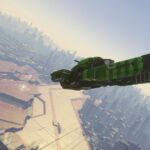


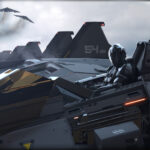
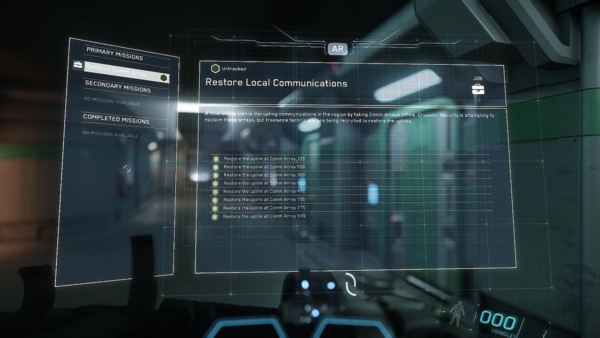

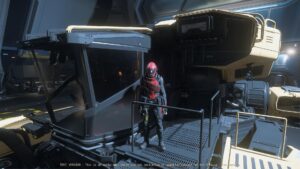
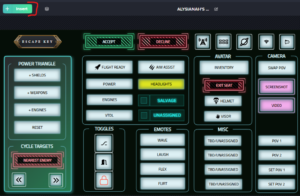
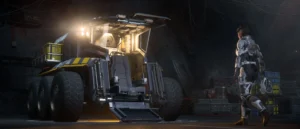
More Stories
Adventure in Salvaging
3.18 PTU Salvage
Create Your Own GameGlass Shard!